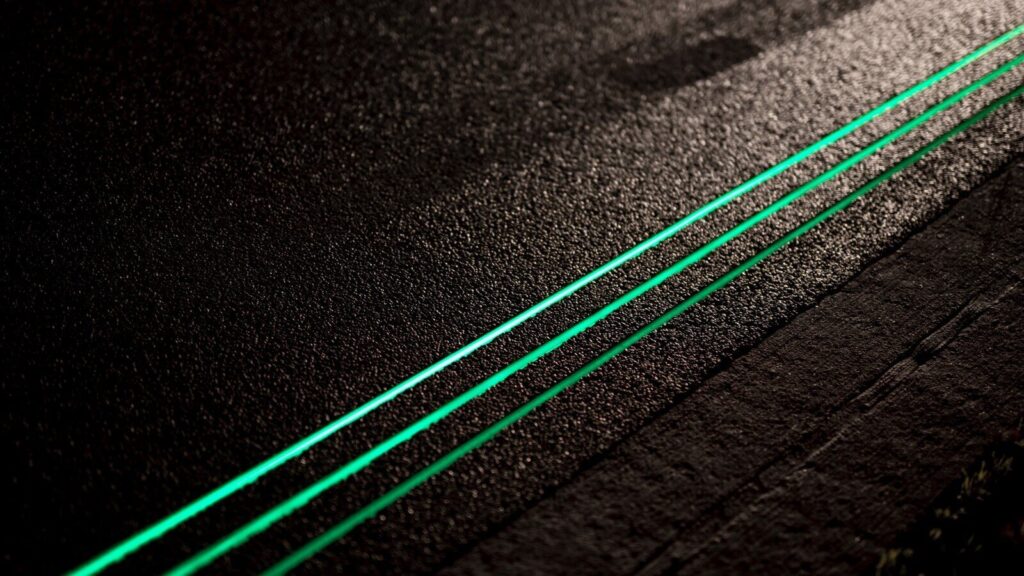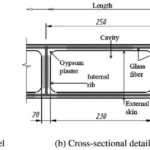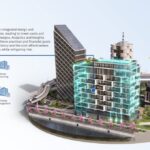
In recent years, construction and design have seen exciting innovations aimed at enhancing the functionality, sustainability, and aesthetics of buildings. One such revolutionary material that is gaining attention is light-emitting concrete. This cutting-edge material combines the strength and durability of traditional concrete with the ability to emit light, offering endless possibilities for both practical and decorative applications. In this blog, we will explore what light-emitting concrete is, how it works, and the potential it holds for the future of architecture.
What Is Light Emitting Concrete?
Light-emitting concrete is a unique form of concrete that integrates light-emitting materials, such as phosphorescent particles or LEDs, within the concrete mixture. These materials allow the concrete to glow or emit light when exposed to specific conditions, such as sunlight or electrical currents.
The light emitted by this concrete can be used for both functional and aesthetic purposes. For example, it can be used to illuminate outdoor spaces or architectural features, or it can serve as an energy-efficient alternative to traditional lighting systems. The concrete can be used in various forms, such as paving stones, wall panels, and even decorative flooring.
How Does Light Emitting Concrete Work?
There are two primary types of light-emitting concrete:
- Phosphorescent Concrete: This type of concrete contains phosphorescent particles that absorb and store light during the day and release it at night. The concrete absorbs natural sunlight or artificial light and emits a soft, glowing light after dark. This process is called photoluminescence, and the intensity of the glow depends on the amount of light the material absorbs during the day.
- LED-Embedded Concrete: This type of light-emitting concrete incorporates small, energy-efficient LEDs into the concrete matrix. The LEDs can be powered by electrical currents, allowing for customizable lighting effects. This version of light-emitting concrete can offer a more intense and controllable light source compared to phosphorescent concrete.
Benefits of Light Emitting Concrete
- Energy Efficiency: One of the most significant advantages of light-emitting concrete is its energy efficiency. Phosphorescent concrete stores energy during the day and emits light at night without requiring an external power source. This reduces the need for traditional streetlights and lighting systems, cutting down on electricity consumption.
- Aesthetic Appeal: Light-emitting concrete adds a striking visual element to any space. It can be used to create stunning light features in both exterior and interior settings. For example, glowing pathways, illuminated facades, or decorative walls can create unique, eye-catching designs that enhance the aesthetic value of buildings and landscapes.
- Sustainability: As a sustainable material, light-emitting concrete can help reduce energy consumption and light pollution. By using natural light for illumination, this material supports energy-saving efforts and minimizes the impact on the environment. Moreover, the long lifespan of light-emitting concrete reduces the need for frequent replacements, contributing to lower resource usage.
- Improved Safety: In urban settings, light-emitting concrete can improve safety by providing constant illumination in public spaces such as sidewalks, parks, and bike lanes. Its soft glow can enhance visibility at night, reducing accidents and improving pedestrian and vehicle safety.
- Low Maintenance: Light-emitting concrete is relatively low-maintenance. Unlike traditional lighting systems, which require regular bulb replacements or repairs, light-emitting concrete is durable and requires minimal upkeep. Phosphorescent concrete can glow for hours after absorbing light, while LED-embedded concrete has a long lifespan and consumes less power.
Applications of Light Emitting Concrete
- Public Infrastructure: Light-emitting concrete can be used in the construction of roads, sidewalks, and public spaces, providing energy-efficient lighting for streets and pathways. It is particularly useful in areas that require minimal external lighting, such as pedestrian zones or parks, and can help reduce light pollution.
- Architectural Design: The use of light-emitting concrete in facades, walls, and flooring allows architects to create dynamic and visually stunning buildings. By integrating light-emitting concrete into architectural features, buildings can have a unique, glowing appearance that changes with the time of day.
- Interior Spaces: Light-emitting concrete can be used in interior design to create modern and innovative lighting solutions. It can be incorporated into flooring, walls, or furniture, offering an alternative to traditional lighting fixtures.
- Landscaping and Outdoor Spaces: Light-emitting concrete can be used in landscaping to create glowing pathways, garden walls, and decorative elements. It adds an artistic touch to outdoor spaces and enhances their usability during nighttime hours.
Challenges and the Future of Light Emitting Concrete
While light-emitting concrete has great potential, there are still some challenges to overcome. For example, the intensity and duration of the glow in phosphorescent concrete can be affected by environmental factors such as weather conditions or the amount of sunlight available. Additionally, the cost of integrating LED technology into concrete can increase the price of the material.
However, with advancements in material science and lighting technology, these challenges are being addressed. As researchers continue to refine the properties of light-emitting concrete, we can expect to see improvements in performance, cost-effectiveness, and applications.
Conclusion
Light-emitting concrete represents an exciting leap forward in the development of smart building materials. Its ability to provide energy-efficient, sustainable, and visually captivating lighting makes it an ideal choice for modern architecture and design. Whether used for public infrastructure, private homes, or commercial spaces, light-emitting concrete has the potential to transform the way we think about lighting and construction.
As technology continues to evolve, we can look forward to even more innovative applications for this material, further enhancing its impact on the future of sustainable and functional architecture.

Illuminating the Future: The Role of Light Emitting Concrete in Sustainable Architecture
In the quest for more sustainable and innovative building materials, light-emitting concrete is rapidly gaining traction as a game-changer. This cutting-edge material offers a unique blend of energy efficiency, durability, and aesthetic appeal, making it an exciting choice for sustainable architecture. In this blog, we will explore the role of light-emitting concrete in the future of sustainable design and how it is helping to reduce the environmental impact of modern buildings.
The Need for Sustainable Building Materials
As climate change and environmental degradation continue to be pressing concerns, the building industry is looking for ways to reduce its carbon footprint and energy consumption. Traditional lighting systems, while effective, often contribute to significant energy waste and light pollution. In response, architects, engineers, and designers are turning to sustainable materials that can provide efficient lighting solutions without compromising on functionality or style.
Light-emitting concrete is one such material that offers both environmental and aesthetic benefits. By integrating light-emitting properties into concrete surfaces, buildings can minimize their reliance on traditional lighting systems, reducing energy consumption and contributing to more sustainable design practices.
How Light Emitting Concrete Contributes to Sustainability
- Energy Efficiency: Light-emitting concrete, particularly the phosphorescent variety, absorbs sunlight during the day and emits it at night. This process eliminates the need for electricity-powered streetlights, reducing overall energy consumption. In areas with ample sunlight, light-emitting concrete can function as a natural, sustainable lighting source, providing illumination without the need for an external power source.
- Reduction of Light Pollution: Traditional lighting systems can contribute to light pollution, particularly in urban environments. Light-emitting concrete provides a more controlled and subtle light source that is ideal for areas such as sidewalks, bike lanes, and parks, where lighting is necessary but excessive brightness is not. This helps reduce the negative effects of light pollution on surrounding ecosystems and human health.
- Long-Term Durability: Light-emitting concrete is durable and long-lasting, making it an ideal material for sustainable construction. Unlike traditional lighting systems that require frequent maintenance and bulb replacements, light-emitting concrete requires little to no upkeep. Its longevity reduces the need for constant material waste and repair, contributing to more sustainable building practices over time.
- Reduced Carbon Footprint: By incorporating light-emitting concrete into building design, architects and developers can reduce the carbon footprint of their projects. Phosphorescent concrete stores energy from the sun, and LED-embedded concrete consumes minimal power. The reduced need for electricity-powered lighting helps lower the building’s overall energy consumption, contributing to a smaller carbon footprint.
- Versatile and Eco-Friendly Design: Light-emitting concrete can be used in a variety of ways, from street paving to decorative architectural elements. This versatility makes it a perfect material for incorporating sustainable design principles into both public and private spaces. Whether used in façades, walkways, or landscape features, light-emitting concrete offers an environmentally friendly solution to a wide range of design challenges.
Applications of Light Emitting Concrete in Sustainable Architecture
- Street Lighting and Urban Infrastructure: Light-emitting concrete can be used in public infrastructure, such as roads, sidewalks, and public plazas. The ability to provide soft, natural lighting without relying on electricity makes it a perfect solution for energy-efficient street lighting in urban areas.
- Sustainable Building Facades: Integrating light-emitting concrete into building facades provides both aesthetic appeal and functional benefits. The glow emitted from the material can enhance the building’s visual identity while reducing the need for external lighting systems. This can be especially useful for large-scale commercial buildings, where energy savings can have a significant impact.
- Green Building Certifications: As the demand for sustainable architecture continues to rise, green building certifications such as LEED (Leadership in Energy and Environmental Design) are becoming increasingly important. Light-emitting concrete contributes to achieving points in energy efficiency, sustainable materials, and innovation in building design. By incorporating this material into a project, architects can improve their chances of securing a green building certification.




